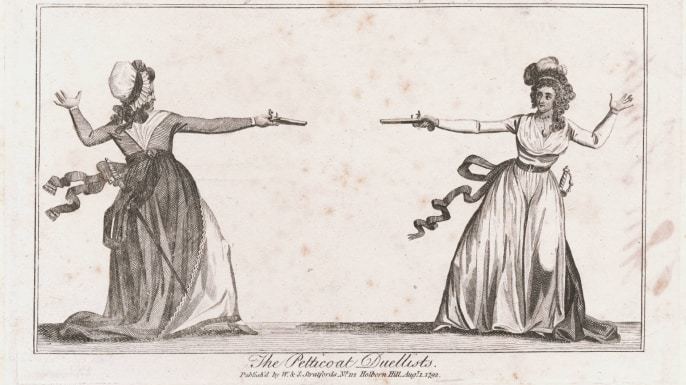When you think about it, it doesn’t make a lot of sense referring to some duels as bizarre duels because all duels are by nature bizarre. True, the duel had its roots in the trials by combat of the Middle Ages and trials by ordeal of the Nordic and Germanic sagas preceding them. But participants in such trials believed in providence; that God would determine the outcome of the battle. In the post-Enlightenment years, during which most of this list’s duels are set, such beliefs had long since started to evaporate, and combatants were quite arbitrarily putting their lives on the line to preserve some loosely defined ideas of honor.
Yet all the way up until the mid-19th century, when the practice of dueling universally breathed its last, the need to defend one’s honour stood shoulders above the impracticalities of doing so. This didn’t make later duels any less interesting, though; in fact, it did the opposite. And whether because of the motivations behind them, the manner in which they were fought, or the reputations of those who fought them, the dueling stories told in this article are sure to baffle.
Monsieur Le Pique and Monsieur de Grandpré
One of the problems, when it came to dueling with inaccurate 19th-century firearms, was that, instead of determining a deserving, skillful winner, it left everything a bit, well… up in the air. On one spring day in 1808, two French duellists chose to adopt this metaphor quite literally when they decided to settle a bitter dispute by shooting at each other from two hot air balloons, suspended over Paris.

The disagreement was over a woman, Mademoiselle Tirevit, who had won the hearts (and excited the imagination) of both men. Originally with de Grandpré, the young dancer at the Paris Opera soon became romantically involved with Le Pique. With Tirevit unable to choose, both men naturally decided that the only way to settle the matter was to take to the skies with blunderbusses. Whether the lady in question knew anything about their idea is unknown. We can assume not; broaching the idea probably would have gone down like a lead balloon.
Their choice of the balloon was motivated partly by the fact that both believed a landlocked duel would have been beneath them (which, as it turned out, it quite literally would), and partly by the fact that both were complete basket cases. Alternatively, it could have been nothing but hot air, meant in jest but taken at face value. Regardless, in late April they went about constructing their identical balloons and began waiting for the appointed day.
On May 3, 1808, Le Pique and de Grandpré cut their ties from this earth and began their ascent, along with their respective pilots who—for reasons that utterly escape me—had agreed to join them. Having climbed to about 900 yards (820 meters) above the flabbergasted crowd of onlookers, a signal was given and the two pulled out their blunderbusses. Le Pique somehow missed, but de Grandpré found his mark. He punctured Le Pique’s balloon, sending it plummeting down to earth to be dashed to pieces upon the housetop of a presumably furious Parisian. Needless to say, the crash claimed Le Pique’s life (not to mention that of his unfortunate pilot).
His victory secured and his honor intact (at least insofar as it could be after sending an innocent pilot plunging to his death), de Grandpré floated gently down to earth. Avoiding the carnage of Le Pique’s crash site, he landed somewhere on the outskirts of Paris. We don’t know what happened with him and Mademoiselle Tirevit, even though both men genuinely thought that she would “bestow her smiles on the survivor”. If de Grandpré and Tirevit did go on to have a relationship, it’s fair to assume it had its ups and downs.

